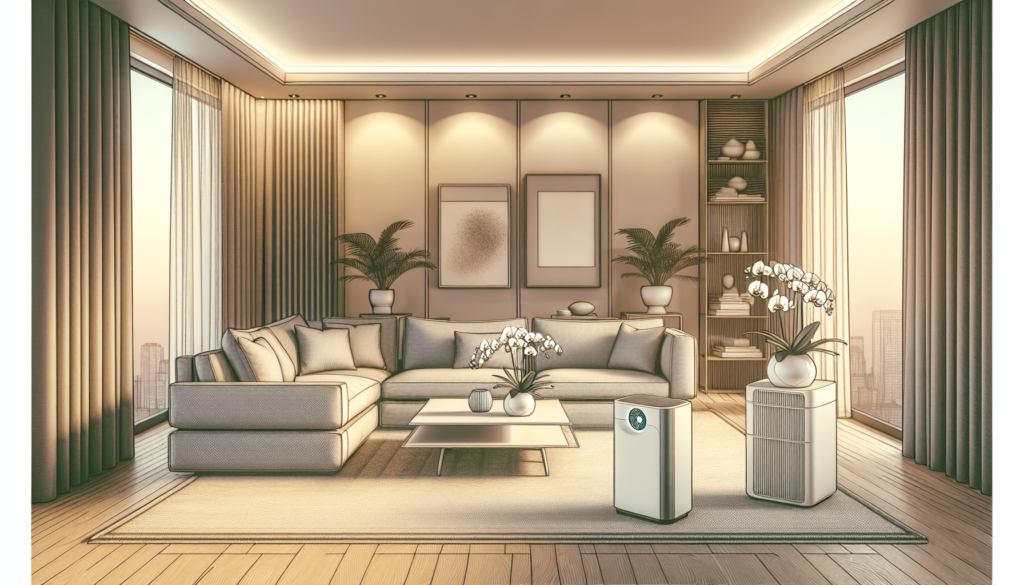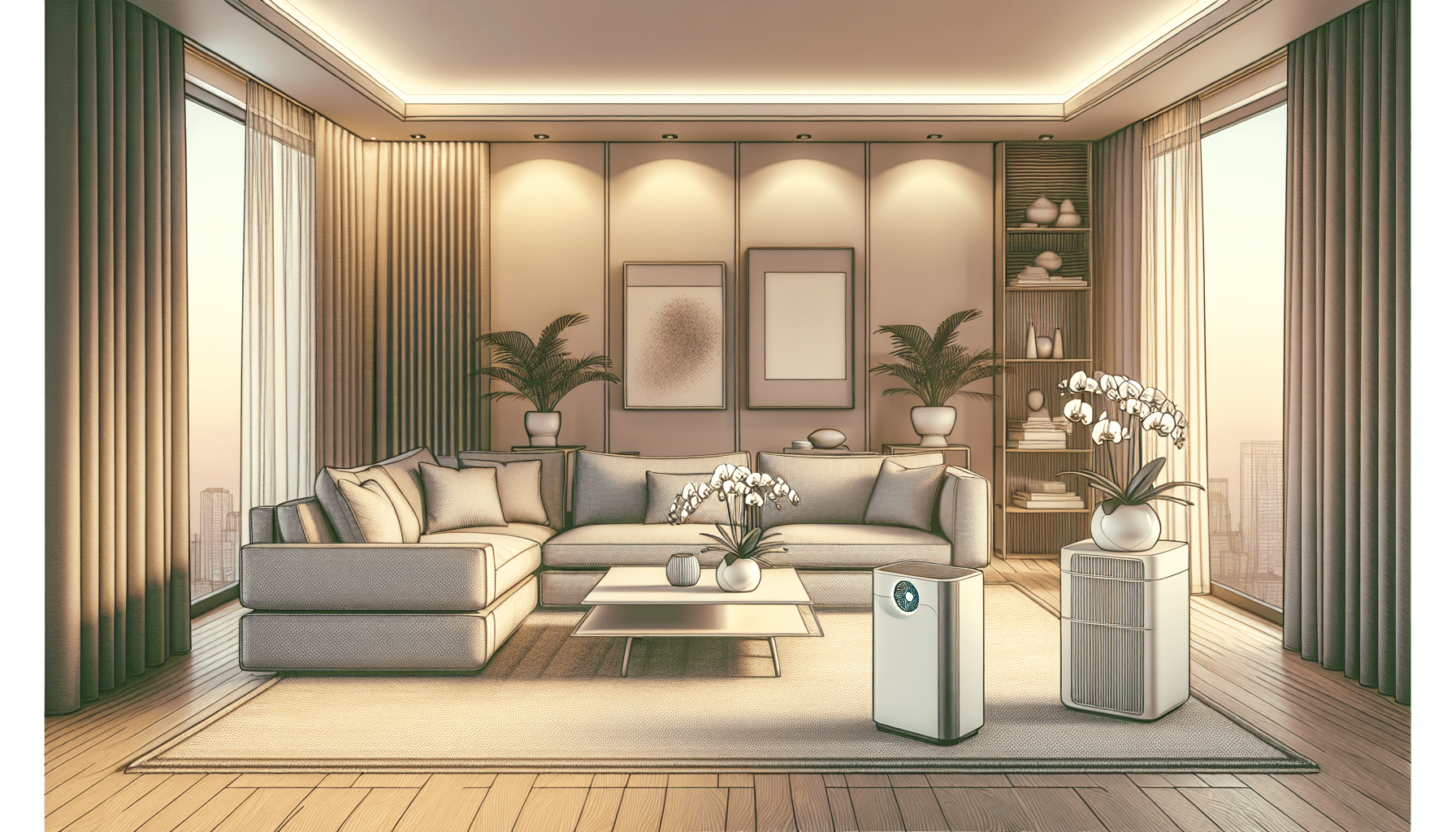Creating an allergy-friendly entertainment area may seem like a daunting task, but with the right approach, you can transform your space into a welcoming and safe haven for all your guests. The key lies in making thoughtful choices about your surroundings, from the furniture and flooring to the decorations and refreshments. You’ll discover tips on selecting allergy-friendly materials, managing allergens through proper cleaning routines, and even choosing the right plants to keep your environment both beautiful and safe. Your entertainment area will soon be the favorite spot for friends and family, free from the worries of allergies. Have you ever thrown a party or hosted a gathering only to realize some of your guests have allergies that could make them uncomfortable? If so, creating an allergy-friendly entertainment area can not only make your guests feel welcomed and appreciated but also ensure everyone’s safety and enjoyment. Let’s explore how to go about creating such a space!

Understanding Allergies
What are Allergies?
Allergies occur when your immune system reacts to a foreign substance or food that doesn’t cause a reaction in most people. These substances, known as allergens, can include pollen, pet dander, certain foods, and even dust mites.
Common Allergens
Here are some of the most common allergens you might need to be mindful of:
| Allergen | Examples |
|---|---|
| Food | Peanuts, Tree Nuts, Milk, Eggs, Wheat, Soy, Fish, Shellfish |
| Environmental | Pollen, Dust mites, Mold, Pet dander |
| Chemical | Cleaning products, Fragrances, Pesticides |
Understanding what you are dealing with is the first step in creating an allergy-friendly environment.
Assessing Your Space
Evaluate Your Current Setup
Take stock of your current entertainment area. What elements might contain allergens? For example, you might need to replace certain items or clean more thoroughly to remove dust and pet dander.
Identify Potential Allergy Triggers
Consider everything in your space that might be a potential allergen. Is your upholstery fabric potentially harboring dust mites? Are there fresh flowers or scented candles around the room that could be problematic?
Cleaning and Maintenance
Regular Cleaning
Cleaning needs to be thorough when catering to individuals with allergies. Vacuum your carpets, clean up any pet hair, and dust all surfaces diligently. Use a vacuum cleaner with a HEPA filter to ensure the air stays as clean as possible.
Air Quality
Air purifiers can be a fantastic investment if you frequently entertain guests with allergies. They can help remove potential airborne allergens such as dust and pollen. Make sure to regularly replace or clean the filters.
Mold and Mildew
Water damage can often go unnoticed but result in mold and mildew, which are strong allergens. Check for leaks or damp spots and address them promptly. Regularly clean bathroom areas and places that might stay damp.
Selecting Allergy-Friendly Furniture and Decor
Upholstery Choices
Opt for leather or synthetic fabrics instead of cloth that can harbor allergens. These materials are easier to clean and don’t hold onto dust mites or pet dander.
Decorations
Avoid decorations that could potentially trigger allergies. Fresh flowers, for instance, might seem like a lovely touch but can be problematic. Consider artificial plants or flowers instead.
Flooring Options
Carpet fibers can trap allergens, making hardwood or laminate flooring a better choice. If replacing your flooring isn’t an option, consider regularly cleaning your carpets with hypoallergenic products.

Allergen-Free Food and Drinks
Ingredient Awareness
When planning your menu, it’s crucial to be aware of common food allergens. Reach out to your guests in advance to understand their dietary restrictions.
Cross-Contamination Prevention
Preparation spaces and tools should be carefully cleaned to avoid cross-contamination. Use separate utensils and cutting boards for different types of food.
Safe and Inclusive Menu Planning
Here are a few allergy-friendly snack ideas for your next gathering:
| Type of Dish | Allergy-Friendly Options |
|---|---|
| Appetizers | Hummus with veggies, Rice cakes, Fruit platters |
| Main Dishes | Grilled chicken, Quinoa salad, Baked potatoes |
| Desserts | Sorbets, Gluten-free cookies, Dairy-free ice cream |
Ensure that you clearly label any dishes you prepare so guests know what they can safely consume.
Entertainment and Activities
Non-Allergenic Games and Activities
Choose games and activities that won’t exacerbate allergies. Avoid using items like play dough or certain art supplies that might contain allergens. Consider board games, card games, or other non-contact activities.
Pet Handling
If you have pets, you might want to create a pet-free zone for your entertainment area during gatherings. Inform guests about your pets in advance so they can prepare if they have severe allergies.
Final Preparations
Before your guests arrive, do a quick sweep of your entertainment area to ensure everything is in place. Make sure you have antihistamines or other allergy medications on hand, just in case someone has an unexpected reaction.
Communicate Openly
Invitation Details
When inviting your friends and family, let them know in advance that you are making an effort to create an allergy-friendly environment. This will put them at ease and allow them to inform you of any specific needs.
Signage and Labels
Use clear signage for food items, alerting guests to potential allergens. A label along these lines can go a long way: “Gluten-Free” or “Contains nuts.”
Places Often Overlooked
Ventilation Systems
Allergens can accumulate in HVAC systems. Schedule regular maintenance checks and cleanings to ensure the air circulating in your home is as clean as possible.
Outdoor Spaces
If you have an outdoor entertainment area, be mindful of seasonal allergens like pollen. Regularly clean outdoor furniture and consider using allergen-reducing garden plants.
FAQs about Creating an Allergy-Friendly Entertainment Area
What should be the first step in creating an allergy-friendly entertainment area?
The first step is to identify potential allergens in your current space. From there, you can create a cleaning and maintenance plan to remove or mitigate these allergens.
How can I educate myself about allergies and potential allergens?
There are many resources available, such as websites like the American Academy of Allergy, Asthma, and Immunology (AAAAI) and the Asthma and Allergy Foundation of America (AAFA).
What are some quick fixes for making a space allergy-friendly?
Consider smaller changes, such as switching out your air filters, using unscented cleaning products, or simply giving your home a more thorough clean before hosting an event.
Conclusion
Creating an allergy-friendly entertainment area is a thoughtful way to ensure all your guests can enjoy themselves without worrying about their allergies. By understanding the common allergens, maintaining a clean and well-ventilated space, and being meticulous about food preparation, you set the stage for a truly inclusive and enjoyable gathering. It may require a bit of effort and attention to detail, but the positive impact it will have on your guests’ experience will be well worth it. Invitations to allergy-friendly parties will be highly anticipated, making your home the go-to gathering place in no time!
